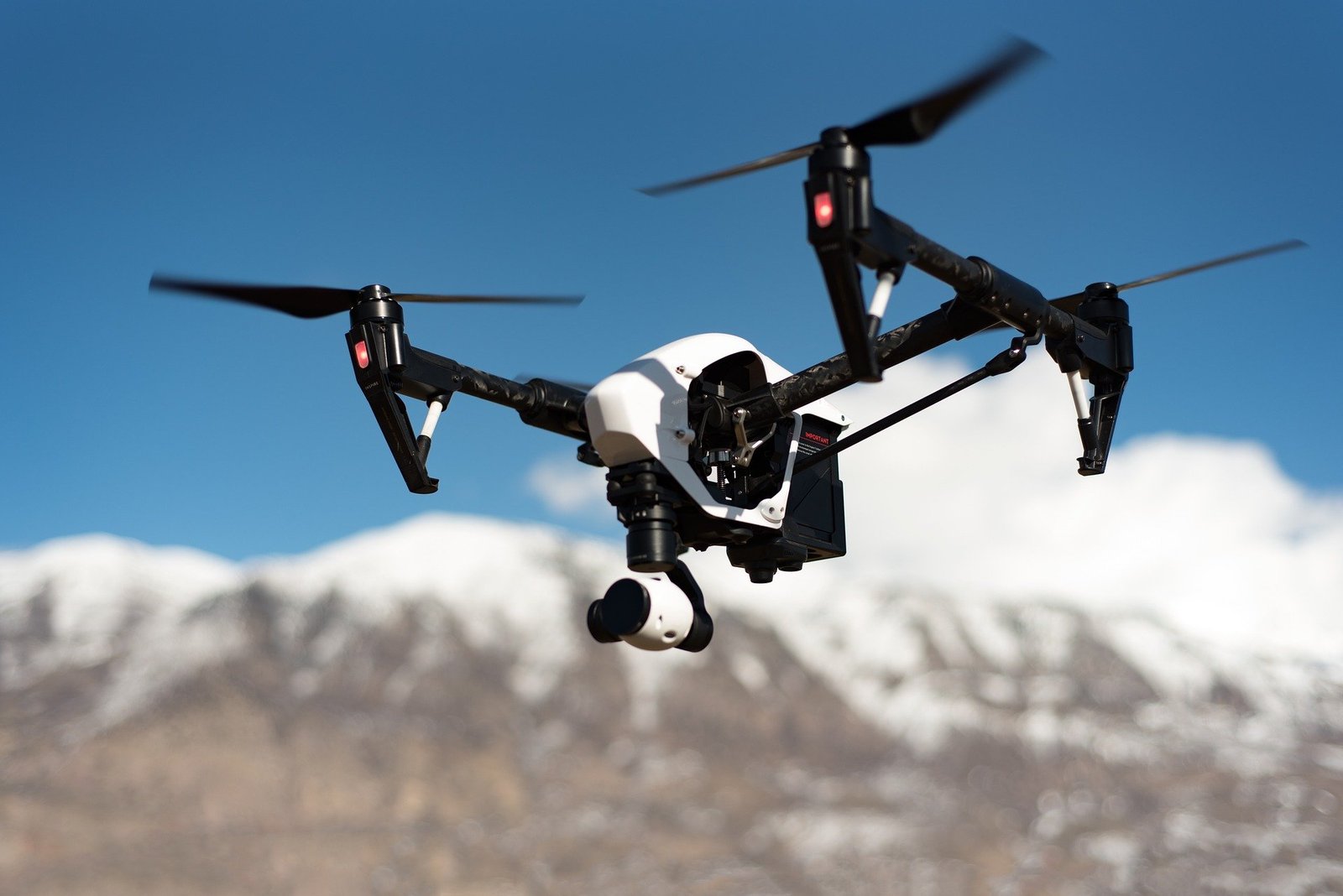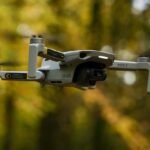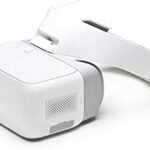Introduction to Drone Mobile Technology
Drones, or unmanned aerial vehicles (UAVs), have evolved remarkably over the years, transforming from military tools into a versatile technology with numerous applications across various industries. As drone mobile technology gains popularity, it’s fascinating to delve into its history and the diverse roles these flying machines play in our modern world.
History of Drones
The timeline of drones dates back over a century! Initially, their purpose was primarily military. The first recorded use of a drone-like device was during World War I when the British military experimented with radio-controlled flying machines. However, the significant turning point came during World War II when the U.S. developed the Radioplane OQ-2, the first mass-produced drone used for training anti-aircraft gunners. Fast forward to the 21st century, and drones have undergone a revolution. The rapid advancement of technology made drones more accessible and versatile. In the early 2000s, commercial interest began to rise, leading to their application in surveying, mapping, and search-and-rescue missions. Today, you can find drones not just in military operations but in various sectors:
- Agriculture: Farmers use drones to monitor crop health, map fields, and assess yield potential.
- Delivery Services: Companies like Amazon are experimenting with drone delivery systems to enhance logistics.
- Entertainment: From aerial photography in films to live event coverage, drones provide unique perspectives.
Imagine attending an outdoor concert where drones deliver drinks to your seat—how cool is that? These advances highlight just how much drones have permeated everyday life!
Uses of Drones Today
The applications of drone technology are expanding rapidly, reshaping how we carry out tasks. Let’s look at some of the most common uses today.
- Photography and Videography Drones have transformed the world of photography. As an enthusiast, I’ve had a chance to capture breathtaking landscapes and unforgettable moments from perspectives I never thought possible. Whether you’re filming a wedding, producing a documentary, or creating content for social media, drones allow you to capture stunning aerial shots easily.
- Mapping and Surveying Surveyors and engineers are utilizing drones to collect geographical data efficiently. They create 3D maps and conduct land surveys with software that processes aerial images. This technology saves time and reduces costs significantly. It’s a game changer for construction companies needing to assess land accurately before starting projects.
- Search and Rescue Operations Drones equipped with thermal imaging cameras can locate missing persons much faster than traditional search methods. In emergencies, the ability to quickly survey large areas allows rescue teams to save lives. In a community I follow, volunteers used drones after a natural disaster to assess damages and coordinate responses, highlighting their importance in crisis situations.
- Agriculture Monitoring Farmers employ drones to monitor crop health and optimize their yields. By capturing images over their fields, they can identify areas needing attention, like pests or diseases, even before they are visible to the naked eye. This functionality not only boosts efficiency but also promotes sustainable farming practices.
- Environmental Monitoring Drones are widely used for conservation efforts. They help in wildlife monitoring, forest management, and tracking environmental changes. Non-profit organizations deploy drones to gather data on endangered species or illegal deforestation activities.
The versatility of drones is remarkable, and as technology improves, you can expect even more innovative uses to emerge. Just imagine future applications involving disaster relief efforts or even assisting with delivering medical supplies to remote areas! In summary, the history and uses of drone mobile technology showcase how far we’ve come. From military origins to applications that enhance our daily lives, drones are not just a trendy gadget; they’re reshaping industries and changing how we interact with the world. The future undoubtedly holds even more exciting developments as this technology continues to evolve. ✈️
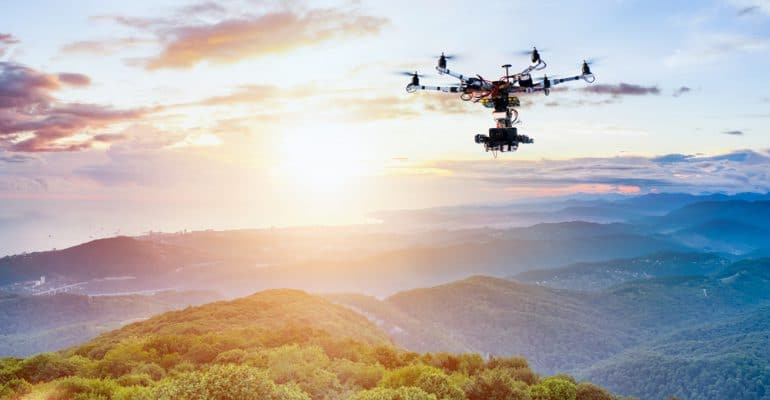
Types of Drones
As we’ve explored the history and the myriad uses of drones, it’s time to dive into the different types of drones available today. Each type brings unique capabilities and is suited for specific tasks. Let’s take a closer look at two of the most popular types: fixed-wing drones and quadcopter drones.
Fixed-wing Drones
Fixed-wing drones resemble small airplanes and are designed for longer flight times and greater distances. Unlike their multirotor counterparts, fixed-wing drones have wings that generate lift, allowing them to glide through the air. Key Characteristics:
- Flight Duration: These drones typically offer longer flight times, making them ideal for surveying large areas. Some fixed-wing drones can fly for several hours on a single charge.
- Speed: They can travel at higher speeds compared to quadcopters, which is particularly useful for applications like aerial mapping and surveying.
- Range: Fixed-wing drones can cover vast distances without needing to return frequently for recharging or refueling.
Advantages:
- Efficiency in Coverage: If you’re involved in surveying or agriculture, fixed-wing drones can cover hundreds of acres in a single flight. For example, one of my friends runs a farm, and he showed me how he uses a fixed-wing drone to manage his crops across vast fields without spending hours walking through them.
- Stability in Wind: They handle windy conditions better due to their aerodynamics, making them suitable for outdoor operations.
Disadvantages:
- Complexity: Piloting a fixed-wing drone can be more challenging, especially for beginners. They require more skill to control and maintain stable flight.
- Takeoff and Landing: They usually need a runway or a long clear area for takeoff and landing, which can be a limitation in urban environments.
Examples of fixed-wing drones include the SenseFly eBee and the Parrot Disco, both of which are excellent for operations requiring extensive area coverage and data collection.
Quadcopter Drones
Quadcopters, often referred to as multirotors, are probably the most recognized type of drone today. These little machines have four propellers, allowing them to hover, ascend, and descend with remarkable agility. Key Characteristics:
- Maneuverability: Quadcopters excel in agility and can take off and land vertically. This makes them ideal for urban settings or areas with limited space.
- Hovering Ability: Their ability to remain stationary in the air allows for precise photography and videography, something that is invaluable for content creators.
Advantages:
- Ease of Use: Many quadcopters come equipped with user-friendly controls, making them accessible even for beginners. I’ll never forget my first experience flying a quadcopter. It was a bit shaky at first, but once I got the hang of it, the thrill was unbeatable!
- Versatile Applications: They’re versatile for various applications, from hobbyist photography to commercial inspections. Many filmmakers use quadcopters to capture dynamic shots that add depth and perspective to their work.
Disadvantages:
- Flight Duration: Compared to fixed-wing drones, quadcopters generally have a shorter flight time, typically ranging from 20 to 30 minutes.
- Weather Sensitivity: Due to their lighter weight and design, they can be less stable in windy conditions.
Popular quadcopter models include the DJI Phantom series and the Mavic series. For instance, if you’re venturing into aerial photography, the DJI Mavic Pro is a compact and highly capable choice, combining ease of use with impressive image quality. Comparison Table:
| Feature | Fixed-wing Drones | Quadcopter Drones |
|---|---|---|
| Flight Time | Longer (up to several hours) | Shorter (20-30 minutes) |
| Speed | Faster (ideal for covering distance) | Slower (better for hovering) |
| Maneuverability | Less agile (requires open space) | Highly maneuverable (can hover) |
| Use Case | Surveying, mapping, agricultural | Photography, videography, inspections |
In summary, both fixed-wing and quadcopter drones have unique advantages and disadvantages, making them suited for different types of tasks. Understanding these differences can help you choose the right drone for your specific needs—whether it’s capturing breathtaking aerial photos or surveying expansive lands. As technology evolves, who knows what new designs will emerge and what tasks drones will tackle next? 🌍✨
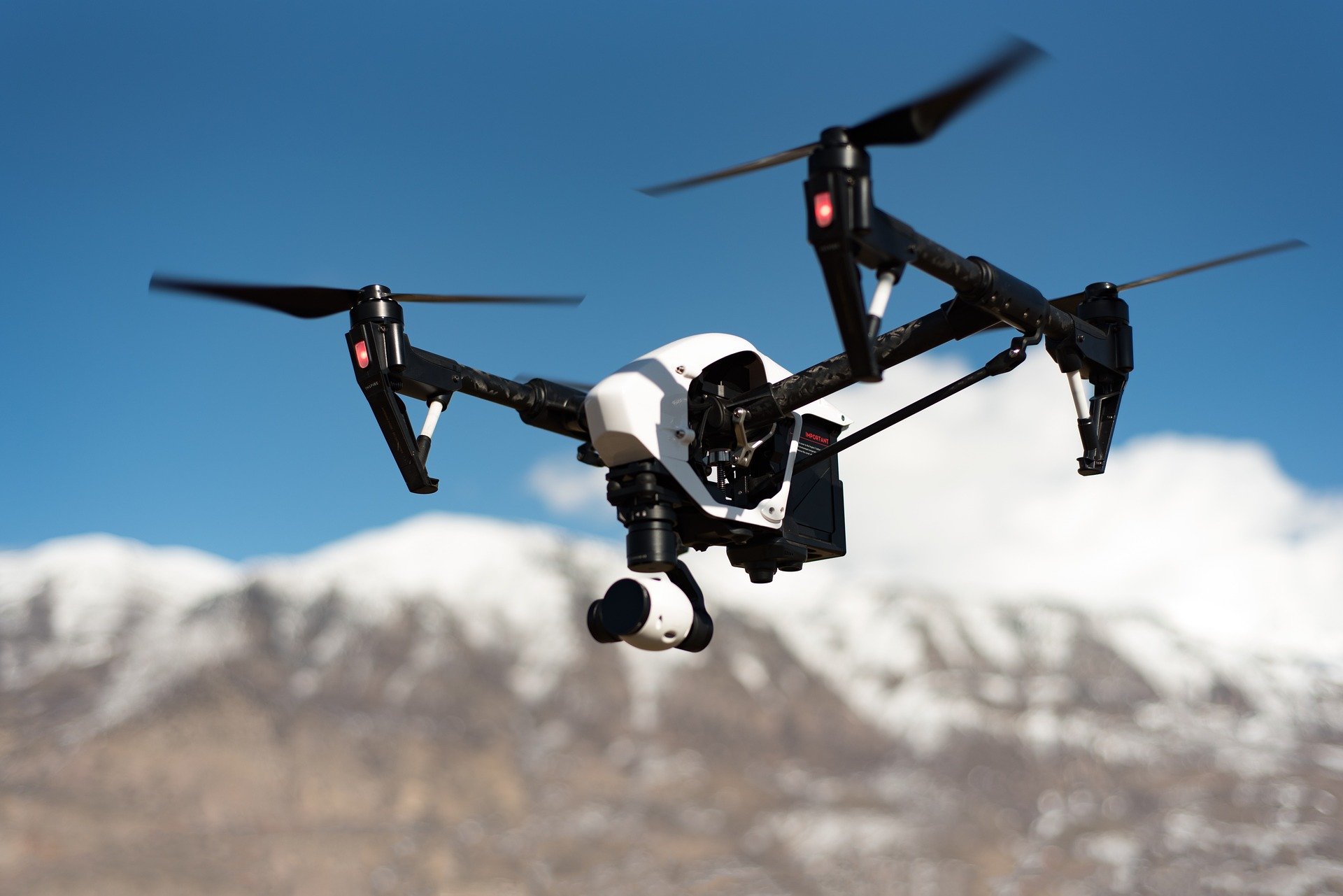
How Drones Work
With a clearer understanding of the types of drones and their applications, it’s time to dive into how these amazing pieces of technology actually operate. At the core of every drone are its components and control systems, which work together to offer you the flying experience you enjoy. Let’s explore these aspects, starting with the essential parts that make a drone tick.
Components of a Drone
Drones consist of several vital components that contribute to their functionality. Understanding each part can help demystify how these fascinating machines operate:
- Frame: The frame is the structure of the drone, typically made of lightweight materials like carbon fiber or plastic. The design can vary depending on whether it’s a quadcopter or fixed-wing drone. For instance, while visiting a drone exposé, I was amazed at how various designs can significantly impact weight and stability.
- Motors and Propellers: In quadcopters, there are usually four electric motors, one on each arm, that rotate the propellers. The propellers generate lift by rotating at high speeds. A fun little fact I learned is that the pitch of the propellers can influence the drone’s speed and maneuverability.
- Battery: This component powers the drone, generally using lithium-polymer (LiPo) batteries. Battery life can be a game-changer for drone enthusiasts—nothing is more frustrating than a low battery warning mid-flight! Advanced models can provide better battery management systems to optimize power usage.
- Controller: The controller, or flight controller, is the brain of the drone. It processes the data from various sensors (like GPS, accelerometers, and gyroscopes) and sends command signals to the motors. When I first flew a drone, I quickly learned that the controller’s responsiveness plays a huge role in a smooth flight.
- GPS Module: This component helps in navigation, enabling drones to maintain their position and return to a designated point. Having flown in areas with unreliable signals, I can’t stress enough how crucial GPS is for ensuring a safe experience.
- Camera (optional): Many drones are equipped with cameras for aerial photography or videography, showcasing stunning views from above. The quality of the camera can vary widely, and some high-end models even offer 4K resolution and advanced stabilization technology.
Understanding these components allows you to appreciate the engineering marvel of drones. Each part plays a critical role in delivering the seamless flight experience you see in videos.
Drone Control Systems
Once you have a grasp on the components, the next piece of the puzzle is understanding the control systems. The control system ensures that the drone operates smoothly and accurately responds to your commands.
- Remote Controller: This is typically how you control your drone. A remote controller sends commands to the drone via radio frequencies. Features such as joystick controls allow for precise movements, while built-in displays may provide telemetry data, flight information, and battery status. I remember my first time using a remote controller—it felt like I was piloting a mini-aircraft!
- Autonomous Flight Systems: Many modern drones come equipped with various autonomous features, like GPS waypoint navigation and follow-me modes. With these systems, you can set a flight path, and the drone will follow it independently. I’ve had some fun testing this feature when it captured me biking along a scenic route, allowing me to focus on pedaling while the drone handled the filming.
- Software and App Integration: Drones often come with companion mobile apps that allow you to customize settings, plan flights, and review footage. These apps enhance user interaction, providing a user-friendly interface for beginners and advanced settings for seasoned flyers.
- Sensor Technology: Advanced drones utilize sensors to avoid obstacles, maintain stability, and manage altitude. This tech can save you from unfortunate crashes—an experience I’d rather forget when I misjudged my flying skills early on. Obstacle avoidance sensors can help navigate complex environments.
- Telemetry Data: Drones collect real-time data on factors like altitude, speed, and battery life, relaying this information back to the pilot. Understanding telemetry data allows you to make informed decisions during flight and ensures a safe and enjoyable experience.
In summary, understanding how drones work through their components and control systems can significantly enhance your flying experience. Equipped with this knowledge, you’re better prepared to pilot these awe-inspiring machines, whether for photography, surveying, or leisurely exploration. The journey into the drone world is just beginning, and the possibilities are truly exciting! 🚀✨
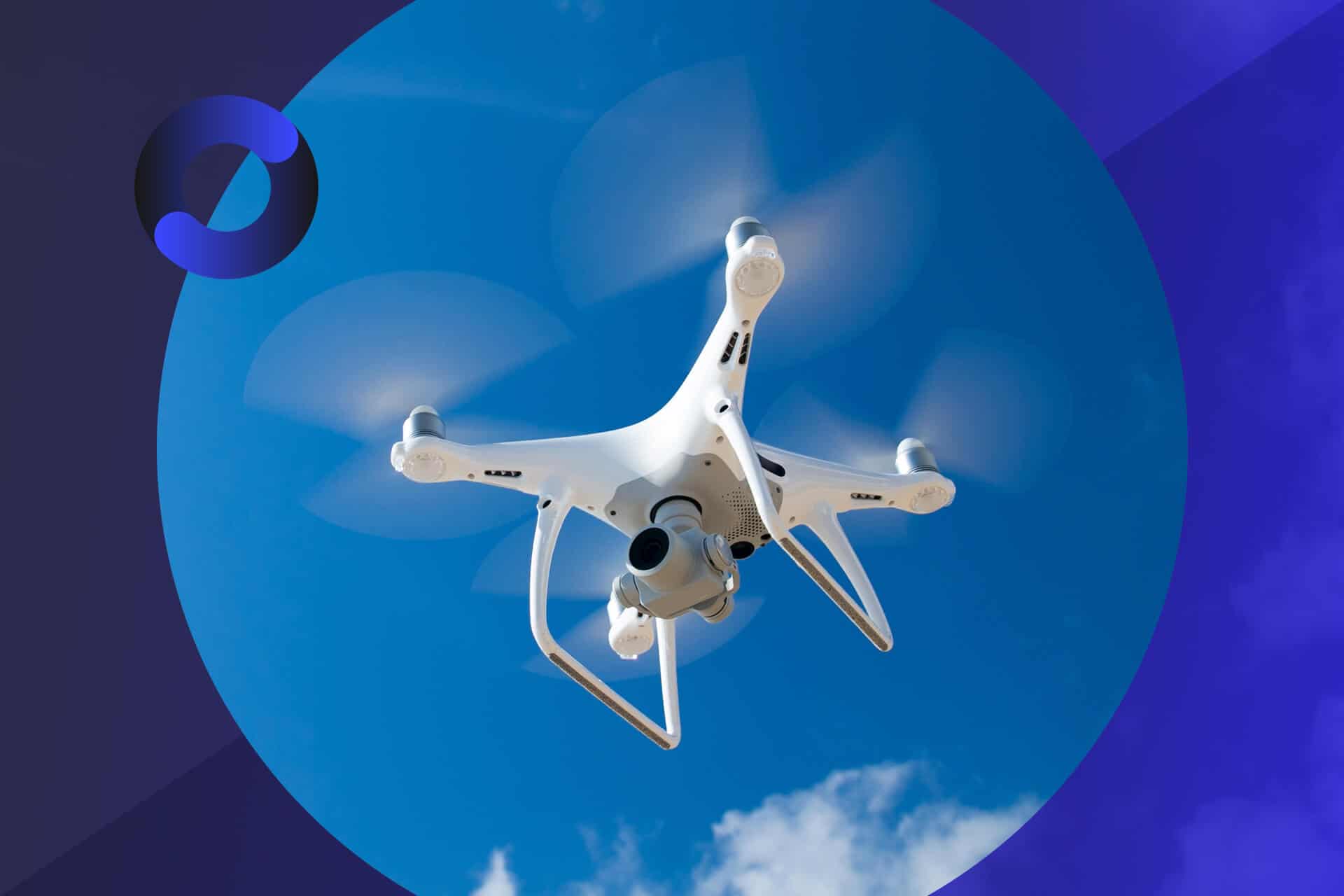
Advances in Drone Technology
As we’ve explored the fascinating workings of drones, it’s exciting to note just how rapidly this technology is advancing. Innovative developments in artificial intelligence and automated flight features are reshaping the drone landscape, enhancing their capabilities and making them more user-friendly than ever. Let’s delve into these groundbreaking advancements.
AI Integration in Drones
Artificial intelligence (AI) is at the forefront of the latest drone advancements, significantly improving their efficiency and functionality. AI-driven capabilities allow drones to operate with a level of sophistication previously unimagined.
- Smart Navigation: With AI, drones can learn to navigate complex environments using advanced algorithms. By processing data from sensors, they can identify and avoid obstacles in real-time. I recall an incident where a friend’s drone autonomously avoided a tree branch while filming, demonstrating the incredible agility that AI integration brings to drone navigation.
- Data Analysis and Processing: Drones equipped with AI can analyze the data they collect, such as aerial images or sensor readings. For example, in agricultural applications, AI can identify crop health issues directly from drone imagery, allowing farmers to address problems before they escalate. I once saw a demo where a farmer used drone-captured data analyzed by AI to optimize irrigation systems, which resulted in a significant yield increase!
- Facial and Object Recognition: AI technology has advanced to the point where drones can recognize faces and objects. This has applications in security, where drones can patrol areas and identify unauthorized individuals or detect unfamiliar objects. Imagine a drone flying over a large event, identifying individuals who may need assistance or recognizing areas that require immediate attention. This level of intelligence adds a layer of security that was unimaginable just a few years ago.
- Autonomous Decision-Making: AI integration allows drones to make real-time decisions based on the data they gather. For instance, if a drone detects a sudden change in the weather—like a rapid drop in temperature—it might automatically return to its launch point for safety. This decision-making capability enhances the safety and reliability of drone operations.
The incorporation of AI into drones promises endless possibilities, making them smarter and more capable than ever. As users, we can look forward to a future where drones not only follow our commands but also assist us with advanced decision-making.
Automated Flight Features
In addition to AI, automated flight features are revolutionizing how we interact with drones, making them easier to fly while expanding their application in various fields. These advancements allow people of all skill levels to enjoy the benefits of drone technology.
- Waypoint Navigation: One of the most useful automated features is waypoint navigation, where pilots can set multiple GPS coordinates for the drone to follow autonomously. This is particularly beneficial for aerial mapping or photography. I fondly remember using a waypoint feature on my drone to create stunning landscape shots without worrying about manual controls. It made the experience much more enjoyable!
- Follow Me Mode: This feature allows the drone to automatically follow the user or a designated object. Imagine going on a hike, and instead of trying to capture that perfect shot yourself, your drone captures stunning footage of your journey from above as it follows you! It’s perfect for outdoor enthusiasts and filmmakers alike.
- Return-to-Home Functionality: Safety is paramount in drone operations, and the return-to-home feature provides peace of mind. If the battery runs low or the connection is lost, the drone automatically returns to its starting point. This feature saved me on a previous flight when my drone lost connection briefly—talk about a sigh of relief!
- Automated Flight Planning: Many modern drones come with software that allows you to plan and automate entire flight paths. You can set up your drone to fly specific paths for surveying or inspections, making the entire process seamless. This functionality has cut down hours of manual flying for construction managers I know, allowing them to allocate time more effectively.
- Obstacle Avoidance: Built-in obstacle avoidance technology prevents accidents by detecting obstacles in real-time and adjusting the drone’s flight path accordingly. This feature has been invaluable during my flights in wooded areas, ensuring I don’t accidentally crash into trees.
In conclusion, advances in drone technology—particularly AI integration and automated flight features—are transforming our experiences and expanding the potential applications of drones. With their increasing sophistication, drones are beginning to function as reliable partners, adapting to our needs and making our tasks significantly easier. Whether you’re an experienced pilot or just starting, these innovations are paving the way for an exciting future in the world of drones. ✈️🌟
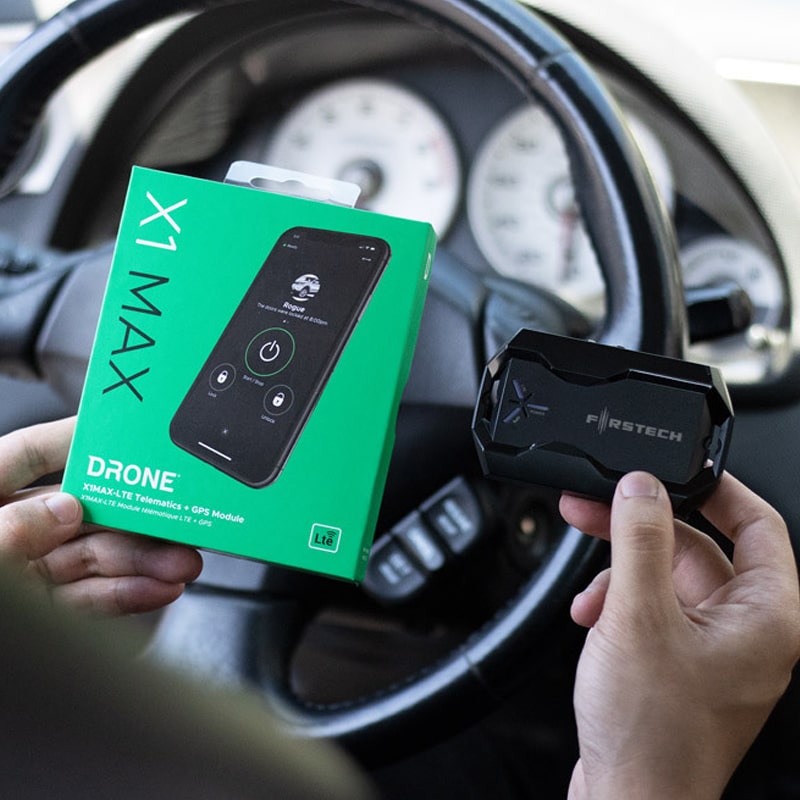
Drone Regulations and Safety
As we embrace the excitement of drone advancements, it’s essential to address the critical areas of regulations and safety. Understanding the rules set forth by regulatory bodies like the FAA (Federal Aviation Administration) and following safety guidelines are crucial for responsible drone operation. Let’s explore these aspects to ensure you fly your drone safely and legally.
FAA Regulations
In the United States, the FAA governs all aspects of civil aviation, including drone operations. They’ve implemented regulations to ensure the safety of both drone pilots and the general public. Here’s a breakdown of the core FAA regulations:
- Registration: Drones weighing more than 0.55 pounds (250 grams) must be registered with the FAA. Registration provides a unique identification number that must be displayed on the drone. I remember the hassle of getting my first drone registered, but it adds a layer of accountability and safety.
- Drone Pilot Licensing: For commercial drone operations, you need a Remote Pilot Certificate, which requires passing the FAA’s Part 107 exam. This certification ensures that pilots understand airspace regulations and the responsibilities of flying a drone. Keeping up with regulations has transformed the way I approach flying drones as part of my freelance work—education is key!
- Altitude Restrictions: The FAA mandates that drones fly below 400 feet above ground level. This restriction helps prevent interference with manned aircraft. I always keep a handy altimeter app on my phone to monitor my altitude during flights.
- No Fly Zones: Drones cannot be flown in certain areas, such as near airports, military bases, or crowded events without special permission. Understanding where you can’t fly helps prevent accidents and legal issues. It’s a good idea to familiarize yourself with tools like “B4UFLY,” an app that shows whether you’re in a restricted zone or not.
- Visual Line of Sight (VLOS): The operator must keep the drone within their visual line of sight at all times during flight. This regulation ensures that the pilot can see the drone and react to any potential hazards. During my recent flight, I found it challenging to maintain VLOS while capturing beautiful footage, but it’s crucial for safety.
By adhering to FAA regulations, you not only protect yourself but also contribute to the safety of others in the airspace.
Drone Safety Tips
Staying informed about regulations is just the first step; practicing safe flying habits is equally important. Here are some essential safety tips to follow when flying your drone:
- Pre-Flight Checklist: Before every flight, conduct a pre-flight check that includes:
- Inspecting the drone for any damages.
- Ensuring the battery is fully charged.
- Updating firmware and software to the latest version.
- Calibrating the compass if flying in a new location.
- Fly During Good Weather: Keep an eye on the weather forecast. Flying in high winds, rain, or fog can compromise the drone’s stability and visibility. I once attempted to fly during a windy day, and I quickly regretted it as my drone struggled against the gusts.
- Maintain a Safe Distance: Always respect people’s privacy and avoid flying close to individuals or private properties without consent. Use your drone responsibly, especially when filming events or gatherings.
- Avoid Restricted Areas: Keep a close watch for signs and notifications about restricted airspace. Ignoring these can lead to serious consequences. Always be aware of temporary flight restrictions (TFRs) in your flying area.
- Be Mindful of Wildlife: When flying near natural habitats, be considerate of wildlife. Drones can disturb animals, so maintaining a respectful distance helps preserve their environment.
- Emergency Protocols: Have an action plan in case something goes wrong, such as signal loss or a low battery. Understanding how your drone will behave in these situations will help you manage emergencies effectively. Some of my fellow pilots and I conduct regular discussions about best practices for emergencies; it’s beneficial to learn from each other.
Quick Safety Checklist:
| Safety Tip | Description |
|---|---|
| Pre-Flight Check | Ensure the drone is in good condition |
| Check Weather Conditions | Fly only in clear, stable weather |
| Respect Privacy | Avoid flying near people/privately owned areas |
| Adhere to FAA Rules | Follow all registration and flying guidelines |
| Stay Updated | Regularly check for changing regulations |
In summary, understanding FAA regulations and adhering to safety tips are essential for responsible drone flying. By being informed and practicing safety, you can enjoy the exhilarating world of drones while contributing to a broader culture of responsible flying. As the technology continues to progress, following these guidelines ensures that we can all benefit from the incredible opportunities drones provide without compromising safety or legality. Happy flying! 🚁✨

Popular Drone Brands
In the exciting world of drones, certain brands stand out due to their innovation, quality, and reliability. As we look at popular drone manufacturers, two names that frequently come up are DJI and Parrot. Each brand has carved its niche, offering a range of products designed for different pilot needs and preferences. Let’s take a closer look at these industry leaders!
DJI
DJI, a Chinese technology company, has become synonymous with consumer and professional drones. Their products are widely used across various fields, from aerial photography to agriculture. Here are some key points that make DJI a favorite among drone enthusiasts:
- Product Range: DJI offers a wide variety of drones catered to different users. Their flagship series, the Mavic line, is known for portability and advanced features, making it perfect for travelers and videographers. I’ve flown multiple DJI drones, and their user-friendly interface gave me the confidence to capture stunning aerial shots, even as a beginner!
- Stellar Camera Quality: DJI drones come with top-notch camera systems. Many models, like the DJI Phantom 4 Pro, feature 4K video capabilities and excellent stabilization technology, ensuring smooth footage. For instance, I recently used the DJI Mavic Air 2 for a short film, and the clarity exceeded my expectations.
- Intelligent Flight Modes: DJI drones are equipped with intelligent modes such as ActiveTrack, which allows the drone to follow moving subjects autonomously. This feature is particularly useful for creators and athletes. During a recent biking trip, I had my Mavic capture the action as it followed me effortlessly—what a memorable experience!
- Safety Features: DJI is committed to safety, incorporating numerous features like obstacle detection, return-to-home functionality, and geofencing to prevent flying in restricted areas. The safety protocols gave me peace of mind and made me feel more comfortable exploring the skies without the added stress.
- User Community and Support: One of the standout aspects of DJI is its extensive support and community. They offer a plethora of tutorials, forums, and customer support options, helping users optimize their flying experience. Last summer, when I struggled with a firmware issue, the DJI forum led me to a solution quickly.
In summary, DJI’s commitment to innovation and flexibility makes it a top choice for both amateurs and professionals. Whether you’re looking to capture breathtaking landscapes or undertake serious aerial projects, there’s likely a DJI drone that fits your needs perfectly.
Parrot
French drone manufacturer Parrot offers a refreshing alternative to DJI, focusing on unique designs and creative applications. Though not as commercially dominant, Parrot has made significant strides in the drone world, particularly with recreational users and specific vertical markets. Here’s why Parrot deserves recognition:
- User-Focused Designs: Parrot drones often feature bright colors and sleek designs that appeal to a younger audience. Models like the Parrot Anafi are compact and easy to transport. I was impressed by how lightweight my Anafi was, perfect for my hiking adventures where every ounce counts.
- Innovative Technologies: Parrot incorporates innovative features such as 4K HDR imaging and a unique 180-degree tilt gimbal that allows for versatile filming angles. This is particularly useful for filmmakers seeking creative shots that showcase depth and perspective.
- Affordable Alternatives: Parrot drones are typically more affordable than DJI’s offerings, making them an attractive choice for beginners or casual users looking for solid performance without breaking the bank. For my entry into drone photography, I found Parrot’s affordability and usability appealing as I learned the ropes.
- Beginner-Friendly Features: Parrot’s drones often come with easy-to-use controls and app interfaces, making them accessible for new pilots. The built-in tutorials helped me grasp essential flying tips, which simplified my learning curve immensely.
- Sustainable Development: A unique aspect of Parrot is its commitment to sustainability. They offer eco-friendly options, such as drones focused on agricultural monitoring that help farmers manage their resources wisely, reducing environmental impact.
Overall, while Parrot may not offer the extensive selection that DJI does, its innovative and approachable designs have cultivated a loyal following, particularly among those looking to explore the world of drones creatively and economically.
Final Thoughts
As you navigate the world of drones, knowing which brands resonate with your needs is crucial. DJI stands out for its advanced technology and versatility, making it a go-to for professionals and serious hobbyists. In contrast, Parrot offers vibrant, user-friendly options great for beginners and creative explorers. Whether you’re interested in photography, agriculture, or thrilling adventures in the sky, both brands have something unique to offer. Happy flying! 🎥✈️

Applications of Drones
Drones have rapidly transformed from being luxury gadgets to integral tools across various industries. Their versatility opens a world of possibilities, allowing for applications that enhance efficiency, creativity, and precision. Let’s dive into two prominent applications of drones: photography and videography, as well as agriculture and land surveying.
Photography and Videography
One of the most exciting uses of drones is in photography and videography. Drones equip photographers and filmmakers with the ability to capture stunning aerial views that would have been otherwise impossible or prohibitively expensive. Here’s why drones have become a game-changer in this field:
- Unique Perspectives: Drones allow you to capture breathtaking shots from the air. Imagine shooting a wedding or a landscape and being able to showcase the grandeur from above. I’ve personally experienced the exhilaration of flying my drone over a scenic coastline, capturing sweeping shots that added a whole new dimension to my portfolio.
- Professional Quality: Many modern drones come equipped with high-definition cameras and stabilization technology. Drones like the DJI Mavic Air 2 offer 4K video capabilities and advanced gimbal stabilization, ensuring smooth and clear footage. I remember when I used my first drone for a short film, and the cinematic quality was miles ahead of what I could achieve with traditional handheld cameras.
- Creative Filming Techniques: Drones enable unique filming techniques such as aerial tracking, orbits, and hyperlapse. These creative moves allow filmmakers to explore their storytelling in new ways. For instance, I often incorporate the “drone follow” technique during my biking trips, capturing dynamic action shots that keep the audience engaged.
- Cost-Effective: Hiring helicopters or cranes for aerial views can be prohibitively expensive. Drones provide a more affordable solution. Many aspiring filmmakers and photographers now have access to equipment that was once reserved for the elite. I can’t tell you how much lighter my wallet felt after using my drone for an event compared to renting a helicopter!
- Live Streaming Capabilities: With advancements in technology, drones can now live stream events directly from the sky! Whether it’s a wedding, concert, or sports event, the aerial perspective can engage a larger audience far beyond the physical location. Just imagine attending a live concert where the drone captures aerial views of the crowd, delivering the experience to thousands online.
In summary, the applications of drones in photography and videography vastly enhance creative storytelling and documentation. With the ability to access unique angles and capture breathtaking shots, drone enthusiasts and professionals alike are seizing the opportunity to elevate their work.
Agriculture and Land Surveying
Beyond creative endeavors, drones have made significant strides in agriculture and land surveying, revolutionizing traditional practices and introducing a level of precision that wasn’t possible before. Let’s explore how drones are shaping these industries:
- Crop Monitoring: Farmers use drones equipped with multispectral cameras to assess crop health. By analyzing data collected from above, they can identify problem areas, such as pests, diseases, or nutrient deficiencies, before they become substantial issues. I recently visited a local farm where the owner showed me how he utilized drones to monitor crop conditions throughout the growing season, ensuring optimal yields.
- Precision Agriculture: Drones contribute to a more precise approach to farming. By providing detailed maps and data, farmers can make informed decisions regarding irrigation, fertilization, and pest control, reducing waste and enhancing productivity. For instance, variable-rate application technology lets farmers apply resources based on specific areas of need, helping to conserve resources and reduce costs.
- Land Surveying: Drones assist surveyors in mapping land and conducting surveys more efficiently. The aerial perspective allows for swift data collection over large areas, significantly reducing the time and labor involved in traditional methods. On one project, I witnessed an engineering team complete what would have taken days with ground crews in just a few hours using a drone for surveying. The efficiency was astounding!
- Land Use Planning: Drones provide detailed topographical maps that are invaluable for land use planning and environmental monitoring. They can capture high-resolution images and generate 3D models to help community planners make better-informed decisions about land development and conservation.
- Inspecting Infrastructure: Beyond agriculture, drones serve well in inspecting pipelines, power lines, and other critical infrastructure. Using drones for inspections saves time, reduces risks for workers, and provides detailed imagery to assess conditions.
In conclusion, the applications of drones have transcended the limits of creativity in photography and videography to playing essential roles in agriculture and land surveying. As technology continues to evolve, drones are becoming invaluable tools across various sectors, paving the way toward more efficient, precise, and sustainable practices. The future of drone technology is indeed bright and full of potential! 🚀🌾
